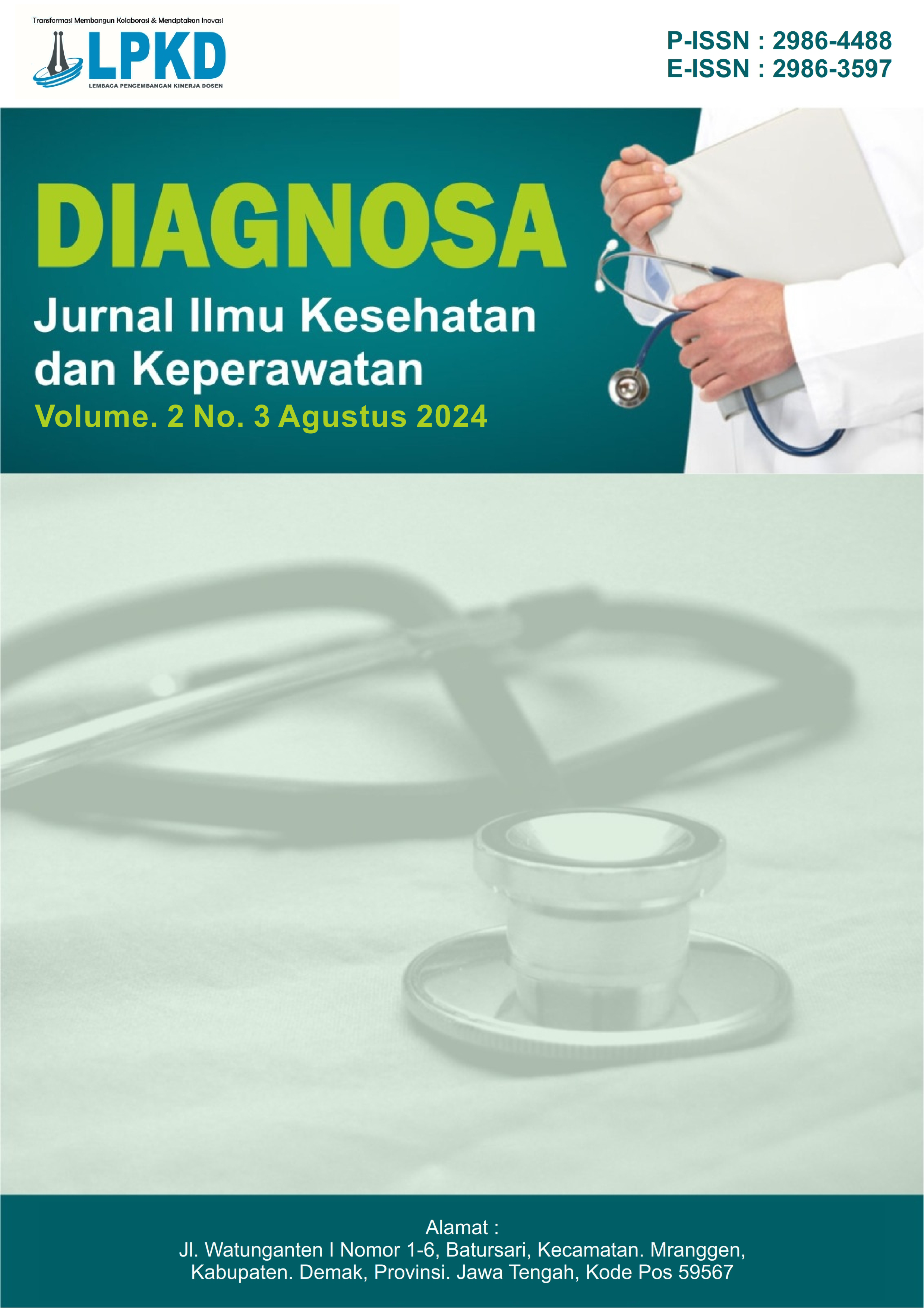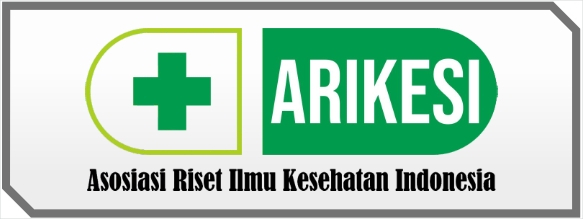The Influence of Learning Organization on The Performance of Non-Medical Staff With Job Satisfaction, Competency and Employee Engagement as Intervening Variables at Hermina Lampung Hospital
DOI:
https://doi.org/10.59581/diagnosa-widyakarya.v2i4.4166Keywords:
Learning Organization, Performance, Job Satisfaction, Competence, Employee EngagementAbstract
Hermina Hospital is one of the organizations that is a learning organization under the auspices of PT. Medikaloka Hermina Group. Hermina Hospital carries out Key Performance Indicators (KPI) to evaluate employees who work at Hermina Hospital. What is assessed from the KPI includes competency, performance, human resource development that is assessed, namely employee dropout and employee engagement with the company. Based on the results of interviews with the HRD department at Hermina Hospital, hospital employees with satisfaction, performance and strong attachment to the company were 73% of medical employees and 27% of non-medical employees. The data corresponds to the KPI values for the period December 2022-May 2023 from each KPI unit that is declared good is with a minimum value of 6 (six) or more, along with data with a KPI value of less than 6, namely Directors, Jangmed, HRD, Finance, Quality staff and Accreditation, General Support and JKN, CSSU, Marketing while the KPI scores in the good category are Nursing, Yanmed, Laboratory units. The aim of this research is to analyze the influence of learning organizations on the performance of non-medical staff with job satisfaction, competence and employee engagement at Hermina Lampung Hospital. This research uses a questionnaire from the development of a previous research questionnaire. The questionnaire was collected using Google forms. This research uses a quantitative research method using a perception survey method to collect data from the population. This perception survey was conducted by distributing a list of questions to respondents. The survey conducted in this research was a cross-sectional survey. Apart from that, this research also used a quantitative descriptive approach using a total sampling that met the inclusion criteria of 58 respondents. Analysis using the path analysis method. The research results from data analysis showed that there was an influence between learning organization on performance, there was an influence of learning organization on job satisfaction, there was an influence of learning organization on competence, there was an influence of job satisfaction on performance, there was an influence of employee engagement on performance, while competency had no influence on performance.
References
Akbar, M.A. and Boseren, M.,(2016)“Pengaruh Budaya Organisasi, Gaya Kepemimpinan dan Kompetensi terhadap Kinerja Pegawai Balai Laboratorium Kesehatan Papua”, Jurnal Future - Jurnal Manajemen Dan Akuntansi, Vol. 3 No. 2, pp. 242–252
Argyris, C. and Schön, D. (1996). Organizational learning II: Theory, method and practice, Vol. 1. Boston: Addison-Wesley
Armstrong, M. (1998). Performance Management. England: Clays Ltd. St Ives Ple.
As’ad, Mohamad. (2004). Psikologi Industri. Liberty: Yogyakarta
Bakker, A. B., Schaufeli, W. B., Bakker, A. B. and Salanova, M. (2006) „The Measurement of Work Engagement with a Short Questionnaire‟, Educational and Psychological Measurement, 66(4):701–716
Bakker, A. B., & Schaufeli, W. B. (2006). The Measurement of Short Questionnaire A Cross-National Study. SAGE Publication, 66, 701–716.
Braham, Barbara J, (2003),Creating A Learning Organisation, Terjemahan dari Fast-Track MBA Series, Jakarta: PT Elex Media Komputindo
Che Rose, R., Kumar, N. and Ong, G.P. (2009). The Effect of Organizational Learning on Organizational Commitment, Job Satisfaction and WorkingPerformance. TheJournalofApplied Business Research, 25(6).
Chin, W. W. (1998). The Partial Least Squares Aproach to Structural Equation Modeling. Modern Methods for Business Research, 295, 336
Diliantri, K. R & Dewi. I.A. M. (2019). Effect of Trainning and Compensation of Employee Performance Medicated by Job Satisfaction. Journal of MagajemenIT&Social Sciences, 6(6), 95 – 103. http://doi.org/https://doi.org/10.21744/irjmis.v6n6.768 Effect
Ebta Setiawan, (2010). Kamus Besar Bhasa Indonesia Offline Versi 1.1, Pusat Bahasa Software,
Dale, Margaret. 2003. Developing Management Skills: Techniques for improving Learning & Performance. Diterjemahkan oleh Ramelan. Jakarta: PT. Bhuana Ilmu Populer
Davis and Newstrom.1985.Human Behavior at Work; Organizational Behavior, International Edition, Singapore;Mc Graw Hill Book Company.
DeLucia, P.R., Ott, T.E., & Palmieri, P.A. 2009. Performance in nursing. Diunduh padatanggal 18 Desember 2017 pukul 11.40 pada http://usil.academia.edu/PatrickPalmieri/Papers/164735/Performance_in_Nursing
Dessler, G. 2000. Human Resource Management. 8th edition. New Jersey: Prentice-Hall, Inc.Edison, Emron, Yohny Anwar dan Imas Komariyah. (2017). Manajemen Sumber Daya Manusia. Bandung: Alfabeta.
Fiol & Lyles, (1985) C. Marlene Fiol and Marjorie A. Lyles Fred Luthans, (2006), Perilaku Organisasi. Edisi Sepuluh, PT. Andi: Yogyakarta.
Gibson, et al, 1995. Organisasi dan Manajemen, Edisi ke empat, Jakarta : Erlangga,
Gibson, J. L. Dkk. (1997). Organisasi dan Manajemen. Jakarta; Penerbit Erlangga
Graham Ilmu Gilbert T. 1978. Human competence: Engineering worthy performance. New York: McGraw-Hill
Handoko, H. T. (2001). Manajemen Porsonalia dan Sumber Daya Manusia. Yogyakarta: BPFG
Handoko, H. T. (2001). Manajemen Porsonalia dan Sumber Daya Manusia. Yogyakarta: BPFG
Henseler, J., Ringle, C. M., & Sarstedt, M. (2015). A New Criterion for Assessing Discriminant Validity in Variance-based Structural Equation Modeling. Journal of the Academy of Marketing Science.
Hollenbeck & Wagner. 1995. Management of Organization Behavior. New Jersey: Prentice Hall, Inc.
Miner, John. B. 1990. Organizational Behavior: Performance and Productivity. New York: Random House
Kahn, W. A. (1990). Psychological conditions of personal engagement and disengagement at work. Academy of Management Journal, 33, 692-724.
Kreitner dan Kinicki, (2005). Perilaku Organisasi. Jakarta: Salemba Empat Kreitner, Robert and Angelo Kinicki, 2001. Organizational Behavior. Fifth Edition. Irwin McGraw-Hill.
Kruse. (2012). What is Employee Engagement. Forbes Leadership
Kuncoro, A., Engkos, & Ridwan. (2012). Analisis Jalur (Path Analisis) (2nd ed.). Alfabeta.
Laily, N. (2011). Pengaruh Karakteristik Pekerjaan Terhadap Kepuasan Kerja dan Kinerja Manajerial Industri Pupuk di Indonesia.
Hair, J. F., Ringle, C. M., & Sarstedt, M. (2011). PLS-SEM: Indeed a silver bullet. Journal of Marketing theory and Practice, 19(2), 139-152.
Hair J.F., et al. 2010.Multivariate Data Analysis.Seventh Edition. New Jersey: Pearson Prentice Hall
Hasibuan, M. (2002). Manajemen Pemeliharaan SDM. Jakarta: Bumi Aksara. Lawler, E. E. 1986. High-involvement management. San Francisco: Jossey-Bass. 2003. Treat people right: how organizations and individuals can propel each other into a virtuous spiral of success. San Francisco, CA: Jossey-Bass.
Luthans, F. (2006). organization Behavior 10th edition. Yogyakarta: andi Yogyakarta
Mahmudi. (2010). Manajemen Kinerja Sektor Publik, Edisi Kedua. Yogyakarta: UPP STIM. YKPN
Macey, W. H., & Schneider, B. (2008). The Meaning of Employee Engagement.p. Industrial and Organizational Psychology, 1, 3–30.
Markos, S., & Sridevi, M. S. (2010). Employee Engagement: The Key to Improving Performance. International Journal of Business and Management. 5(12), 89- 96. Diaksespada
Mc Clelland, David. C. 1988. Human Motivation. New York : Cambridge University Press.
Miner, John. B. 1990. Organizational Behavior: Performance and Productivity. New York: Random House
Mondy. R. w. (2008). Manajemen Sumber Daya Manusia (Edisi 10). Alih Bahasa: Bayu Irlangga, Erlangga, PT. Gelora Aksara Pratama Jakarta.
Mujiasih, E. (2015). Hubungan Antara Persepsi Dukungan Organisasi (Perceived OrganizationalSsupport) dengan Keterikatan Karyawan (Employee Engagement). Jurnal Psikologi Undip Vol.14 No.1, 40 – 51.
Needleman, J., Kurtzman, E. T., & Kizer, K. W. (2007). Performance Measurement of Nursing Care: State of the Science and the Current Consensus. Medical Care Research and Review, 64(2).
Nimon, K., Shuck, B., & Zigarmi, D. (2015). and Job Satisfaction : A Function of Semantic. Journal of Happiness Studies
Nurcahyo, Satria Avianda, and Tri Wikaningrum,(2020) ‘Peran Knowledge Sharing, Learning Organization Dan Individual Innovation Capability Terhadap Kinerja Karyawan’, Jurnal Ekonomi Dan Bisnis, 21.2, 1–25
Palan, R. (2007). Competency Management, Teknik Mengimplementasikan Manajemen SDM Berbasis Kompetensi untuk Meningkatkan Daya Saing Organisasi. Jakarta: Penerbit PPM.
Penner, S. J. (2017). Economic and Financial Management for Murse and Nurse Leaders (3rd ed). New York: Springer Publishing Company.
Peter M senge (1990) “the fifth discipline: the art and practice of the learning organization Potter PA & Perry AG. 2015.Buku Ajar Fundamental Keperawatan konsep,proses dan Praktik Edisi 4, Jakarta : EGC.
PPNI,2005, Standar Praktek Keperawatan Indonesia, Dipublikasikan Oleh Bidang Organisasi PP-PPNI Melalui Htt://Www.Inna-Ppni.Or.Id
Rachman, L., & Dewanto, A. (2016). Pengaruh Employee Engagement terhadap Kepuasan Kerja dan Turnover Intention Perawat (Studi pada Rumah Sakit Wava Husada Kepanjen Malang). Jurnal Aplikasi Manajemen, 14(2).
Rahman, M.F.W. and Kistyanto, A.,(2019) “Hubungan antara Iklim Psikologis terhadap Kinerja Karyawan melalui Kepuasan Kerja”, Dinamika Ekonomi Jurnal Ekonomi Dan Bisnis, Vol. 12 No. 2, pp. 410–429.
Rismawati, Mattalata,(2018). Evaluasi Kinerja Penilaian Kinerja Atas Dasar Prestasi Kerja Berorientasi Kedepan, Makassar : Celebes Media Perkas h. 2
Rivai, Veithzal dan Sagala, Ela Jauvani.(2011).Manajemen Sumber Daya ManusiaUntuk Perusahaan dari Teori Ke praktik. Jakarta:PT Raja Grafindo.
Robbins Stephen P, 2007, Perilaku Organisasi, Jilid 1 & 2, Alih Bahasa :Hadyana Pujaatmaka, Indeks Kelompok Gramedia, Jakarta
Robbins, S. (2003). Perilaku Organisasi. Jakarta: PT Indeks kelompok Gramedia.
Robbins, S. P. (2001). Organizational Behavior. Ninth Edition. New Jersey: PrenticeHall,Inc.
Robbins, S. P., & Judge, T. A. (2008). Perilaku Organisasi. Jakarta: Salemba Empat
Robotham dan R. Jubb. (1996). Competences measuring the unmeasurable. Management Development Review Vol.9 No.5: 25-29.
Sandjojo, N. (2011). Metode Analisis Jalur (Path Analysis) dan Aplikasinya (1st ed.). Pustaka Sinar Harapan
Roussel, L., Thomas, P.L.,& Harris, J.L.(2020). Management and Leadeship for Nurse Administrators (8th ed). Burlington : Jones and Barlett Learning
Sanchez. (1997). Competence-Based Strategic Management. London: John William & Sons.
Setiawan, I. A. d. i. G. (2006). Akuntansi Keperilakuan. Semarang: Badan Penerbit Universitas Diponegoro
Shakeel S, Lodhhi S. (2015). Impact of training and development on employee performance:A Case of Banking Sector of Pakistan
Siagian, S. (2007). Teori Motovasi dan Aplikasi. Jakarta: Bina Aksara) Spencer, Lyle M. dan Signe M.
Spencer. (2007). Competence at work: Models for Superior Performance. Canada: John Wiley & Sons.
Sugiyono. (2013). Metode Penelitian Kuantitatif, Kualitatif dan R&D. Bandung: Alfabeta.CV
Surur, N. (2018). Upaya TPK Koja Bentuk Employee Engagement
Sutrisno, Edy. (2016). Manajemen Sumber Daya Manusia. Cetakan Kedelapan. Jakarta: Prenadamedia Group
Sudarmanto. (2009). Kinerja dan Pengembangan Kompetensi SDM Teori, Dimensi dan Implementasi dalam Organisasi. Yogyakarta; Pustaka Pelajar.
Sunaryo,(2017). Pengaruh Perubahan Organisasi, Budaya Organisasi Dan Perilaku Kerja Terhadap Kinerja Karyawan Di PT. Sisirau Medan. Jurnal Ilmiah Managemen & Bisnis, 18
Syaiful Sagala,(2009) Kinerja dan Pengembangan SDM Yogyakarta: Pustaka Pelajar,, 126.
Wibowo ,(2013). Manajemen Kinerja, Jakarta: Rajawali Press, halaman 2
Wirawan.( 2009). Evaluasi Kinerja Sumber Daya Manusia. Jakarta: Erlangga.
Yusthisia, A.B. (2019)“Analisis Implementasi Manajemen Perubahan terhadap Kepemimpinan dan Budaya Kerja Serta Pengaruhnya Pada Kinerja Karyawan Di Bank Jatim Cabang Banyuwangi”, Journal of Chemical Information and Modeling, Vol. 53 No. 9, pp. 1689–1699,
Zwell, Michael. (2000). Creating a Culture of Competence. New York: John Wiley dan Sons, Inc
Downloads
Published
How to Cite
Issue
Section
License
Copyright (c) 2024 DIAGNOSA: Jurnal Ilmu Kesehatan dan Keperawatan

This work is licensed under a Creative Commons Attribution-ShareAlike 4.0 International License.













